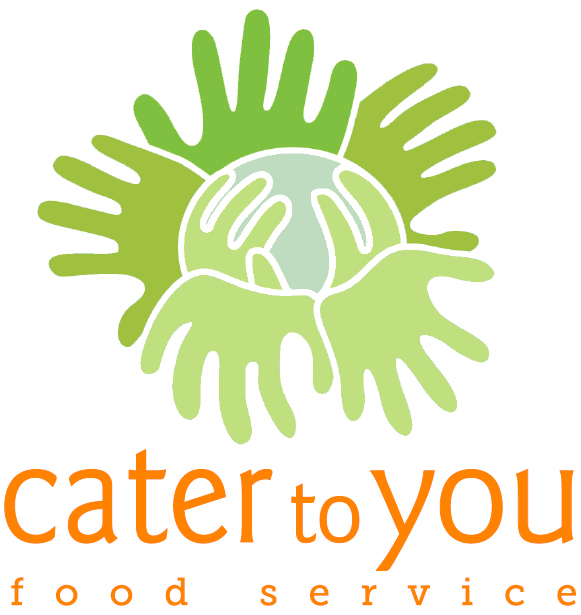5 Foods Kids Should Count In
New year, new decade. And, as usual, we are betting that eating healthier tops the list of resolutions for kids and adults alike. But what if you have been avoiding certain foods that get a bad rap when, in fact, you should and could be adding them in to your daily repertoire? In fact, what if those foods—when added to an already healthy, whole-foods-based diet—could actually help level up your nutrition game? Here are five foods that just might make your better eating resolutions a reality. (Good news: They are all found in our cafes!)
Avocados
They still get flack for their high calorie content and fat content, but we can’t say enough good things about this nutritional powerhouse. Avocados are a good source of fiber, potassium, vitamins C, K, folate and B6, and are a fabulous all-natural beauty food (superb for your skin). They are packed with monounsaturated fats--the kind that can help lower bad cholesterol levels and reduce inflammation. In one recent study of diabetic patients, 200 grams (about 1 medium avocado) daily resulted in lower total cholesterol, LDL and triglyceride levels.
Bananas
Often passed over because they are thought to be too high in sugar, bananas are actually an ideal health food. At about 100 calories and 3 grams of fiber, one medium banana is also rich in potassium and helps to lower blood pressure, manage cholesterol levels, and promote digestive health. Always available, always affordable and always adaptable, bananas make a great breakfast, snack, smoothie, dessert, and all-around-pick-me-upper.
Sweet Potatoes
Potatoes of any kind (yes, even white!) can be a very nutritious choice. However, sweet potatoes especially are packed with vitamins and nutrients. They are one of the best sources of vitamin A, B6, thiamin, niacin, riboflavin and are high in carotenoids, all of which are important for growth and development, immunity, metabolism, and overall cell health. They are also high in vitamin C, potassium, and fiber, the latter of which helps maintain feelings of fullness and supports regularity. Sweet potatoes are a great addition to smoothies or as a base for steamed veggies and a little butter for a complete meal.
Quinoa
For a food that’s used as a grain (and sometimes therefore overlooked), quinoa (pronounced keen-wah) boasts a great protein-to-carb ratio (and it’s actually a seed). It is often considered one of the world’s healthiest foods due to its array of antioxidants, vitamins, minerals and protein in every serving. Although quinoa first became popular here in the last decade, it has been farmed for millennia in South America. Different colors mean only nuanced flavors or cooking times and all provide the same nutritional profile: all 20 amino acids, including nine essential amino acids, a great amount of fiber, potassium, manganese, magnesium, phosphorus, and folate along with other essential micronutrients. It is heart-healthy, disease-fighting, anti-inflammatory, energy supportive, gut protective, and naturally gluten free. Plus, its versatility means it is just as good as a warm breakfast cereal as it is as a cold side or entrée.
Eggs
Eggs may be one of the most nutritious foods on earth--see a trend here? But, when you stick to only whites, you miss out on major benefits. The yolks contain protein, as well as zinc, vitamins A, D and B12, choline and selenium. All of this in one little powerhouse means extra protection for your immunity, bones, brain, metabolism, and more. While eggs were once avoided due to their cholesterol content, we now know that dietary cholesterol intake has a minimal effect on cholesterol levels in the blood. In fact, many new studies show that eggs actually improve cholesterol profiles by raising HDL (“healthy”) cholesterol and lowering LDL (“lousy”) cholesterol. When possible, select certified-humane, pasture-raised eggs.
And 2 Claims To Quit…
We can’t help but overhear chatter in our cafes about foods that parade as “healthy” options. These sneaks contain excess sugar, preservatives, chemicals and other additives that can be harmful. Forget front-of-package promises of 0 calories and 0 fat and check out ingredients as a guide. Here are the top two claims to kiss goodbye in 2020 (if you haven’t already).
Diet Soda
Actually, anything with the word “diet” in its name is a red flag. Aspartame and other non-nutritive sweeteners make diet soda a toxic thirst quencher. Instead, opt for flavored waters like our fresh-made agua frescas, or flavored seltzers if you are seeking the same fizz factor, but without the added sugar. We like Hal’s New York flavored seltzers with no artificial flavors, colors, or sweeteners. Many of our cafes will be bringing in another still and sparkling water this spring: Ever & Ever. This new aluminum bottle-canned water is easily and infinitely recyclable when placed in the correct recycling bins, making it a perfectly sustainable choice.
Low-Fat, Fat-free, Low-Calorie, or Light Anything
Removing healthy fats means adding sugar or other offensive additives to maintain flavor and texture—a silly swap. When shopping for dairy items or packaged snacks, remember: the less ingredients the better and you should be able to pronounce and recognize them all. Yogurt, for example, should be made from milk and active cultures, not artificial flavorings, artificial colors, sweeteners, and preservatives. We like/serve Stonyfield Organic yogurts, which are organic and use milk from pasture-raised cows. It is always better to opt for a little of something “real” made with whole ingredients rather than an item that has had major ingredients removed only to be replaced with sugar, sodium, and more.
